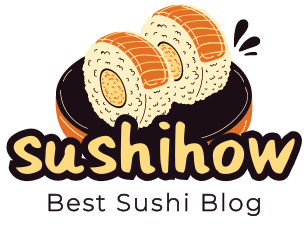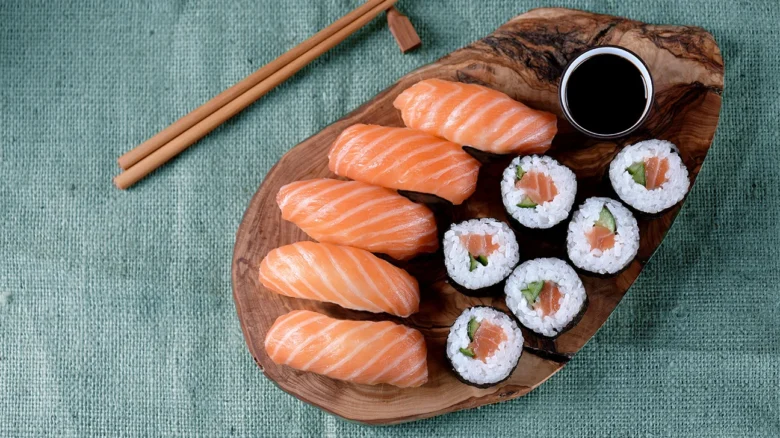Sushi is more than just a dish; it’s a culinary art form steeped in tradition. As you take your first bite of this delectable creation, you’re not merely tasting rice and fish—you are experiencing centuries of Japanese culture. From its humble beginnings to the modern twists we see today, sushi tells a story that connects generations. Whether you’re savoring nigiri or rolling your own maki at home, each piece offers a glimpse into Japan’s rich history and values. Let’s dive deeper into how sushi fits seamlessly into traditional Japanese cuisine.
The History of Sushi in Japan
Sushi’s roots trace back to the 8th century. The original form, known as narezushi, involved fermenting fish with rice for preservation. This method allowed people to store food without refrigeration.
As time passed, sushi evolved into a beloved culinary staple. By the Edo period in the 18th century, it transformed into what we recognize today—fresh fish served atop vinegared rice. Street vendors began selling this quick meal, making sushi accessible to everyone.
Regional variations emerged across Japan, each reflecting local ingredients and tastes. From Osaka’s pressed sushi to Tokyo’s iconic nigiri, these adaptations showcase creativity within tradition.
The post-World War II era saw sushi gain international fame. Interests expanded globally as chefs introduced new flavors and styles while maintaining essential techniques of preparation and presentation that honor its Japanese heritage.
Traditional Ingredients Used in Sushi
Sushi is a delicate dance of flavors and textures, built on a foundation of traditional ingredients. At its core lies vinegared rice, known as shari. This sticky grain acts as the perfect canvas for various toppings.
The fish used in sushi varies by season and region. Freshness is key. Common choices include tuna, salmon, and mackerel. Each type brings its own unique taste profile.
Seaweed, or nori, wraps many sushi rolls with its subtle umami flavor. It adds crunch and holds everything together beautifully.
Vegetables also play an essential role in sushi preparation. Cucumber, avocado, and radish add freshness to each bite.
Condiments like wasabi and soy sauce enhance the eating experience with their sharp heat and salty depth. Together these ingredients create not just a meal but an art form steeped in tradition.
Different Types of Sushi and Their Significance
Sushi offers a delightful variety, each type telling its own story. Nigiri is a classic favorite. It features hand-formed rice topped with fresh fish or seafood. This simplicity highlights the quality of ingredients.
Maki rolls are another popular choice, often showcasing vibrant combinations of flavors and textures wrapped in seaweed. They can be filled with anything from tuna to avocado, making them versatile.
Then there’s sashimi—sliced raw fish served without rice. It’s all about appreciating the purity and freshness of the seafood itself.
Temaki is a fun option too; these hand rolls invite diners to enjoy sushi on-the-go. Their cone shape makes them both portable and visually appealing.
Each sushi type carries cultural significance, reflecting regional preferences and historical practices within Japan’s culinary landscape. The artistry behind sushi preparation reveals much about Japanese traditions and respect for nature’s bounty.
Eating Etiquette for Sushi in Japan
Sushi dining in Japan comes with its own set of unwritten rules. Understanding these customs enhances the experience and shows respect for the culinary art.
When eating nigiri, it’s customary to hold it by hand. Dip just the fish side into soy sauce, avoiding rice contact to prevent sogginess.
You might notice that wasabi is often pre-applied. Adding more can be seen as a faux pas; trust the chef’s expertise instead.
Slurping your noodles is acceptable and even encouraged when enjoying soba or udon, but sushi requires a gentler approach. Chew quietly and savor each bite.
If you’re at an omakase restaurant, allow the chef to serve you directly without making special requests unless necessary. This demonstrates appreciation for their craft.
Avoid mixing wasabi into your soy sauce unless you’re feeling adventurous—this practice isn’t traditional and may raise eyebrows among locals.
Modern Innovations of Sushi
Sushi has evolved dramatically over the years, blending tradition with creativity. Chefs now experiment with flavors and presentations, pushing boundaries beyond classic styles.
One notable trend is the fusion sushi roll. Ingredients like spicy mayo or mango salsa are common additions to traditional fillings, appealing to diverse palates while retaining cultural roots.
The use of technology in sushi preparation is also noteworthy. Sushi robots automate rice rolling and cutting fish, increasing efficiency without sacrificing quality.
Plant-based alternatives have gained popularity too. Vegan sushi options made from avocado, cucumber, and even jackfruit offer delicious choices for those seeking meat-free dining experiences.
Artistic plating has transformed sushi into edible art forms. Many chefs showcase their skills by arranging ingredients in visually stunning ways that delight diners before they take a bite.
How to Make Sushi at Home
Making sushi at home can be a fun and rewarding experience. Start by gathering your ingredients: sushi rice, nori (seaweed), and fresh fish or veggies.
Rinse the rice until the water runs clear, then cook it according to package instructions. Once it’s ready, let it cool while seasoning with rice vinegar, sugar, and salt.
Prepare your fillings by slicing fish like salmon or tuna into thin strips. For veggie enthusiasts, avocado and cucumber are great options.
Lay out a bamboo mat covered in plastic wrap for easy rolling. Place a sheet of nori on top and spread an even layer of rice across it. Leave some space at the edges for sealing.
Add your chosen fillings in the center before carefully rolling from one end to another using gentle pressure. Slice with a sharp knife for perfectly shaped pieces.
Serve with soy sauce, wasabi, and pickled ginger for that authentic touch!
Conclusion: The Timeless Tradition of Sushi in Japanese Cuisine
Sushi is more than just a meal; it’s an art form deeply embedded in Japanese culture. Its history showcases the evolution of culinary techniques and flavors, from humble beginnings to its modern variations. Traditional ingredients like fresh fish, rice, and seaweed highlight the importance of quality and freshness.
The various types of sushi tell stories through their presentation and preparation. Each piece reflects regional influences and local customs that have shaped this beloved dish over centuries. The etiquette surrounding sushi consumption adds another layer of respect for the craft; understanding how to enjoy it properly enhances the experience.
As we look at contemporary innovations, it’s clear that sushi continues to adapt while honoring its roots. Sushi-making has also become a popular activity at home, allowing enthusiasts to connect with this timeless tradition on a personal level.
Through all these aspects, sushi remains a cherished part of Japanese cuisine—a testament to skillful craftsmanship and cultural significance. Whether enjoyed in an upscale restaurant or created in your kitchen, each bite offers a glimpse into Japan’s rich culinary heritage.

